 
 
|
|
The Pointe-du-Hoc
Tuesday, June 05, 2001; posted by Paris
This site has remained essentially the same as it was left on 8 June 1944. The 30-acre battle-scarred area was turned over to the American government in 1979 - the monument built by the French. This text is taken directly from the sign at the site. Pointe-du-Hoc was a link in the long-range defenses of the bay of the Seine (and part of the Atlantic Wall). Some of the gun casemates were built in early 1944 (previously it housed six 155mm guns of French origin). The guns on this site had a range of 12 miles and proved to be a threat to both Omaha and Utah invasion beaches. Its landward defenses and position on a narrow bill ruled out an attack from the rear, much less a parachute drop. That's where the 2nd Ranger Battalion came in.
225 men under Colonel Rudder were to scale both faces of the 100-foot cliff at 6.30 am. The attack was late due to navigational errors caused by the current and the dark. The small landing craft did not arrive until 7.10, forty minutes after the end of the naval bombardment. Having recovered from the shock of the preliminary strikes, the German gunners were ready for their assailants. The Rangers attacked from the eastern side only. With their rocket-fired grappling hooks and rope ladders, the began to climb under a hail of gunfire and hand-grenades. At 7.15, the first Ranger reached the top. At 7.35, the 150 survivors had seized their objective.
As at Riva Bella, the 155mm guns had been removed and withdrawn to positions further inland. But the Germans had replaced them with wooden beams covered with camouflage nets, thus misleading aerial observation. The guns were found down a path 1km further south.
Cornered against the cliff top on this tiny beachhead, the Rangers had to fight for two days, until June 8th at noon. They were down to 90 men by the time the Allied tanks came to their rescue.
|
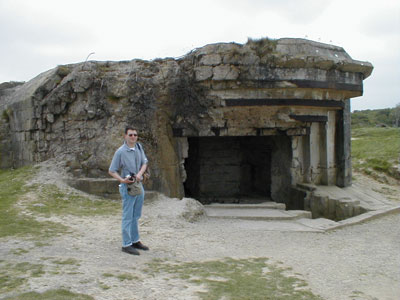 |
Me standing by one of the casemates damaged by aerial bombardment.
|
 |
One of many craters that left this point looking like the lunar surface. Bits of concrete and rebar can be found in piles all over the place.
|
 |
One of the bunkers on the western side of the point. You can still enter this (and many) of the bunkers in this area.
|
 |
Inside the bunker pictured above.
|
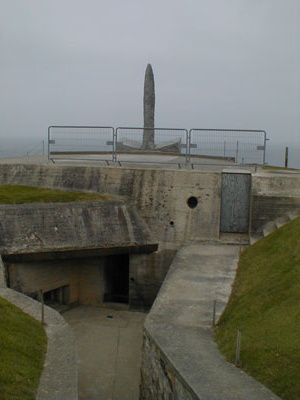 |
This is the memorial to the soldiers who lost their lives during the invasion. Unfortunately, recent erosion made the area unstable so we were not allowed to enter.
|
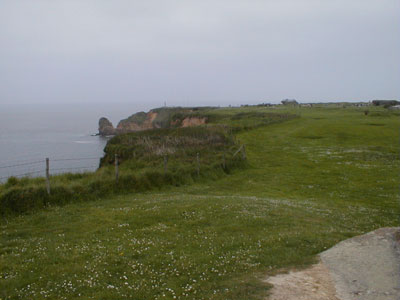 |
This is the view of the Pointe-du-Hoc. The point is partially collapsed.
|
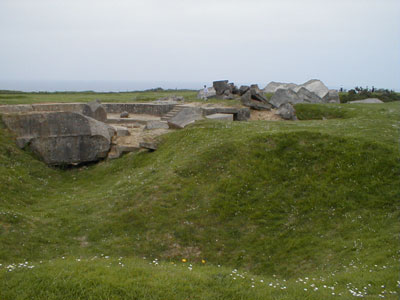 |
One of the bunkers destroyed during the attack. It is amazing to see tons of concrete spread all about.
|
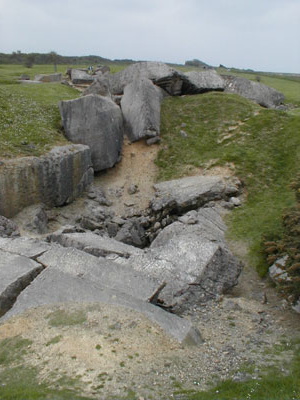 |
Here we could see the remains of a destroyed bunker. Most collapsed into a giant crater, while other massive chunks were strewn about the surrounding area.
|
|







